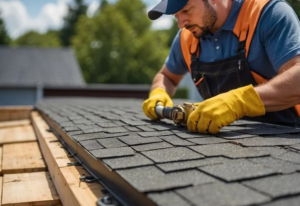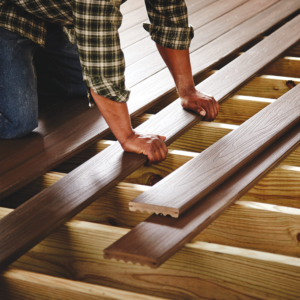Perth Insulation reduces energy costs, keeps your home at a comfortable temperature, and helps reduce noise. It is an essential component of a healthy environment and sustainable design.
The performance of insulation depends on its moisture resistance. Moisture penetration and condensation can significantly reduce its R-value. Understanding why this happens and how you can prevent it is important.

Insulation is a building material that helps regulate the temperature inside a home or business. It keeps rooms warm in winter and cool in summer and can considerably reduce energy bills. Insulation also acts as a sound barrier to reduce the transfer of noise from one room to another. It can be found in walls, floors, and ceilings, as well as draughtproofing and the lagging of hot water tanks.
There are many different types of insulation, each with its own uses and benefits. It is important to choose the right type of insulation for your home and ensure that it is installed correctly. Insulation can be added to a new house at the time of construction or to existing homes as part of a renovation project. The insulation chosen should be based on the climate of your region and your budget.
Thermal insulation is designed to slow and reduce the heat flow between spaces at different temperatures. It can be used in buildings of all types and sizes and is usually made of non-metallic materials filled with air. It is most effective when placed between wall studs and ceiling joists. Insulation is available in many forms, including cellulose, fiberglass, and mineral wool. Many of these products also provide acoustical insulation, which helps to reduce high-frequency sounds like traffic and sirens.
Electrical insulation is designed to prevent electric currents from passing through the insulation and causing arcing or damage. This is generally achieved by ensuring that the insulator is made from a material with low electrical conductivity. It is also important to ensure that the insulator is designed for the voltage that it will be exposed to. If the insulator is not designed for this voltage, it may be subject to puncture arcs or flashover arcs.
A puncture arc occurs when the insulator is punctured or damaged, and causes an electric arc through the interior of the insulator. This arc is often accompanied by a release of stored energy, which can cause physical or chemical changes that degrade the insulator and affect its performance. A flashover arc occurs when the insulator is subjected to high temperatures and causes an electrostatic discharge that passes electricity through it.
How Does Insulation Work?
Insulation acts as a barrier that hinders heat flow and helps regulate temperatures in your home. It is particularly effective in winter as it stops heat escaping out of your home which would otherwise require your heating system to run continuously. It also reduces the loss of heat in summer. This results in your home staying cooler in the summer and warmer in winter, allowing you to cut energy bills drastically.
Heat flows naturally from warm to cold areas but insulation slows this flow which means it takes less energy to keep your home comfortable. Insulation does this by restricting the flow of thermal radiation, conduction and convection.
When deciding what kind of insulation to install, it is important to understand the different types and how they work. The main principle is that the material contains dead air spaces or cells, which slows heat transfer. This is why cellulose is such an excellent insulator, as it contains millions of tiny air pockets within the fibers. It also has the added benefit of being fire retardant.
Other forms of insulation like blown fiberglass and XEPS are closed cell which means there are no air gaps to slow down heat transfer but they don’t perform as well as cellulose. Blown fiberglass is a much cheaper option to cellulose as it doesn’t require expensive specialized equipment to install. Its worth mentioning though that it has the added benefit of being Hygroscopic which means it absorbs and releases water vapour helping to regulate humidity in your home.
The type of insulation that is best for your home will depend on your location and what kind of environment you live in. For example, a cellulose insulated home is not only resistant to fire but it will protect your house from termites, rodents, vermin and mould and mildew.
It will also help to insulate your roof and walls, it can be installed in ceilings, wall cavities and around metal pipes. It is also extremely affordable to install and it can reduce your energy consumption by up to 50%.
What is the Best Type of Insulation?
Insulation is one of the most important components in building structures. It prevents cold air from seeping in during winter and warm air from escaping during summer. This is not only good for your energy bills but also for the comfort of the occupants. Insulation also helps to reduce noise from outside and between rooms.
There are different types of insulation materials available to be used for residential and commercial purposes. The best type of insulation for your home depends on a few things: first, the climate in which you live, second, whether you want to install it yourself or hire professionals, and third, your budget.
Fiberglass is an affordable option that comes in several forms and can be installed with ease. It is also very effective and has a high R-value. It is ideal for walls, floors and ceilings.
Cellulose is another good choice for insulating homes. It is made from recycled paper and has a low environmental impact. It is available in blanket form and loose-fill and has a high R-value of around 3.5 per inch.
Mineral wool is a great insulation material to use for cold climates. It has a high R-value and can help to reduce sound. It is also fire resistant and can slow the spread of flames.
The most expensive type of insulation is spray foam. It has a high R-value but can only be installed by a professional with special equipment. It is good for insulating walls, attic and basement ceilings, and floors.
It is a good idea to consult a building expert before choosing the best insulation for your property. You may be able to claim a grant to assist with the costs of installing it.
While it is not possible to over-insulate a building, there is a point at which the added cost of more insulation does not yield any additional benefits. A good rule of thumb is to add insulation that matches the minimum energy efficiency requirements for your building code. You can check the requirements for your area by using an online tool.
How to Install Insulation
Installing insulation in your walls is one of the most effective home improvements you can make to reduce energy costs, provide comfort and improve indoor air quality. It also buffers noise and increases the efficiency of your heating and cooling systems. And, unlike many other construction projects, insulating your walls does not require a lot of strength or tremendous skill. Using the JM products and guides, you can easily do the job yourself.
First, determine how much rolled or batted insulation you need to buy. To do this, measure the length and width of each wall you want to insulate, then multiply by the number of between-the-studs spaces you need to fill. The result is your total lineage. If you are buying a rolled product, use the recommended R-value chart to choose the appropriate thickness for your space. You will also need to consider the depth of the studs, as this will affect how deep the insulation needs to be.
Once you have determined how much rolled or batted insulation you will need, it is time to start the project. Wearing protective gloves, a long-sleeved shirt and a dust mask to avoid irritation from the insulation fibers, you will need to carefully cut the insulation material to size with a utility knife. When cutting, be sure to use a scrap piece of two-by-four underneath the insulation as a straightedge for the utility knife and to prevent damaging the wall.
When you are ready to start the installation, gently press the insulation into the opening between the wall studs, trimming around electrical outlets as needed. If the insulation is faced, be sure to press it into place so that the paper side faces toward the interior of the house. If you have any gaps or areas that aren’t insulated, fill them with expanding foam insulation before continuing the project.
If your wall has an existing door, window or other opening, you will need to subtract their area from the overall wall area before calculating the R-Value you need for the insulation. This can be done by measuring the height and width of each opening, then multiplying them by 144 to get the square footage of the area you need to insulate.


